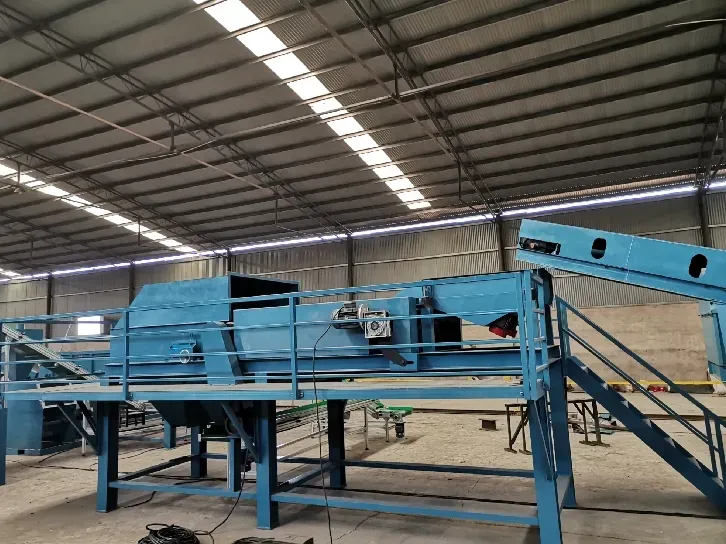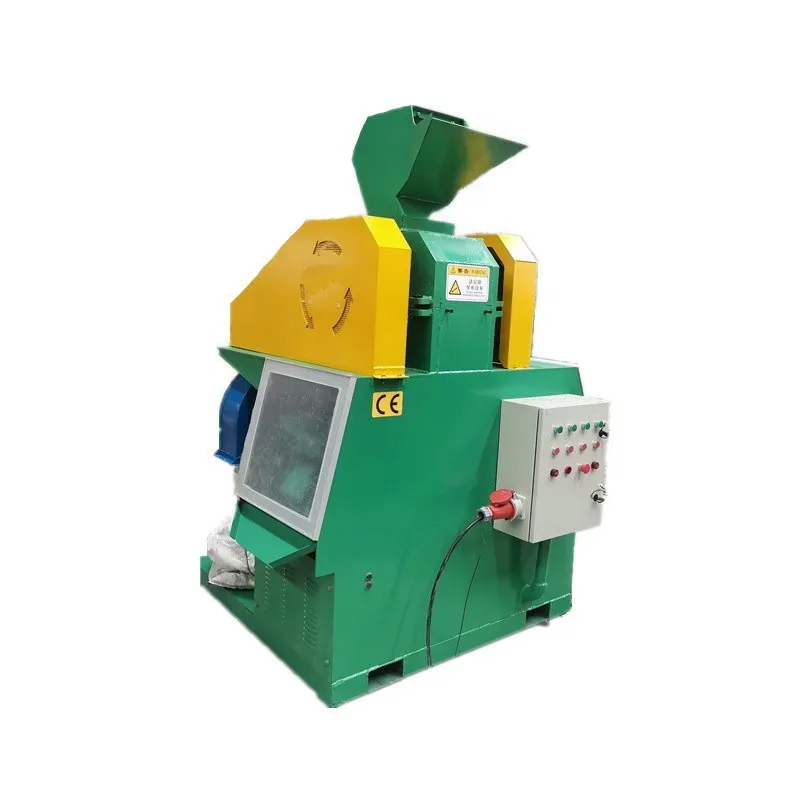
5 月 . 29, 2025 10:45 Back to list

(scrap processing plant)
The global scrap metal recycling market is projected to grow at a 5.8% CAGR through 2030 (Grand View Research), with steel scrap accounting for 40% of total recycled metal volumes. Modern scrap processing plant
s now achieve 98% material recovery rates through advanced separation technologies, compared to 78% in legacy systems. This operational leap reduces raw material costs by up to $152/ton while cutting CO₂ emissions by 62% versus virgin metal production.
Next-generation processing lines integrate AI-powered sorting systems with 3D laser spectroscopy, enabling real-time identification of 37 metal alloys at 12 tons/hour throughput. Proprietary shredding configurations from industry leaders achieve particle size consistency within ±2mm tolerance, critical for downstream smelting efficiency. Eddy current separators now operate at 97% purity levels for non-ferrous recovery.
| Vendor | Throughput (tph) | Energy Use (kWh/t) | Automation Level | CAPEX Range |
|---|---|---|---|---|
| GreenMetal Tech | 55 | 18.7 | AI-Optimized | $4.2M-$6.8M |
| EcoSteel Systems | 42 | 22.4 | Semi-Automatic | $3.1M-$5.4M |
| IronCycle Solutions | 68 | 16.9 | Full Robotics | $7.5M-$9.3M |
Modular plant designs now support three operational paradigms: High-Volume (200,000+ tpa) configurations for municipal hubs, Mobile Units (15-25 tph) for construction site recycling, and Specialty Alloy Recovery systems serving aerospace manufacturers. Hybrid power options combining grid supply with onsite biogas generation reduce energy costs by 31% in field tests.
A Tier-1 automotive supplier implemented a turnkey steel scrap processing plant, achieving 93% yield improvement in stamping operations. The system processes 18,000 metric tons annually of mixed-grade scrap, recovering 96.4% usable material through automated zinc coating detection and alloy separation. Payback period reached 2.7 years versus projected 4.1-year timeline.
EPA-compliant plants now demonstrate 0.08 kg NOx/ton and 1.2 kg CO₂e/ton emission levels through integrated scrubbers and heat recovery systems. Closed-loop water circuits reduce consumption to 0.35 m³/ton processed, while noise dampening technologies maintain 68 dB(A) at property boundaries.
With 73% of global steel production now using recycled content (World Steel Association), advanced scrap processing plants are becoming strategic assets rather than cost centers. Operators adopting smart sensor networks report 19% fewer downtime incidents and 14% higher output purity, directly translating to $18-27/ton premium pricing in secondary markets.

(scrap processing plant)
A: A scrap processing plant is a facility that sorts, cleans, and prepares recyclable materials like metals, plastics, and textiles for reuse. It uses specialized machinery to process waste into raw materials for manufacturing. These plants play a key role in reducing landfill waste and conserving resources.
A: Key equipment includes shredders, magnetic separators, and balers to break down and sort scrap metal. Advanced plants may also use shears, crushers, and conveyor systems for efficiency. Proper maintenance of this machinery ensures optimal recycling output.
A: Steel scrap plants focus specifically on ferrous metals like iron and steel, using electromagnets and sensors to isolate these materials. They often melt processed scrap in furnaces to create new steel products. This specialization improves recycling accuracy and resource recovery rates.
A: The process involves collection, sorting, cleaning, shredding, and melting scrap metal. Sorting separates ferrous and non-ferrous metals, while shredding reduces material size for easier handling. Finally, purified metal is sold to manufacturers for new product creation.
A: Safety measures prevent accidents from heavy machinery, sharp metals, and hazardous materials. Workers require protective gear like gloves, helmets, and goggles. Regular training and equipment inspections further minimize risks in these high-volume environments.
Latest news
Unveiling the Power of Eddy Current Separator
NewsSep.25,2024
Transform Your Home Recyclin:home metal shredder
NewsSep.25,2024
The Future of Waste Management with Recycling Line Picker
NewsSep.25,2024
The Benefits of a Metal Recycling Plant
NewsSep.25,2024
Revolutionize Material Separation with Onwang Technology
NewsSep.25,2024
Innovative Waste Management: Unveiling the MSW Sorting Plant
NewsSep.25,2024